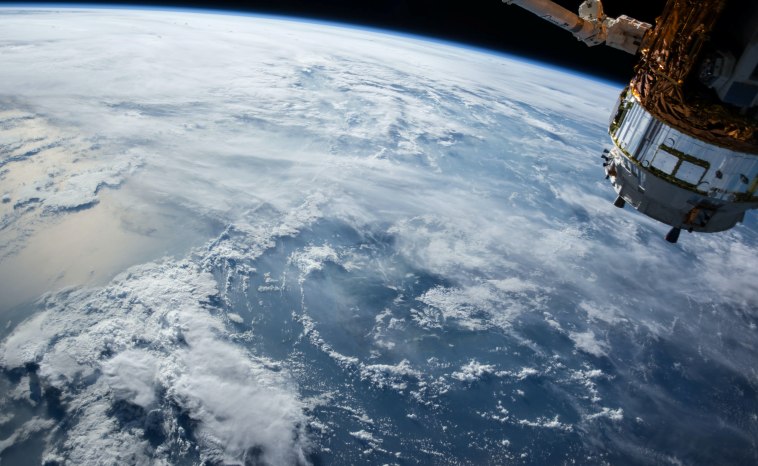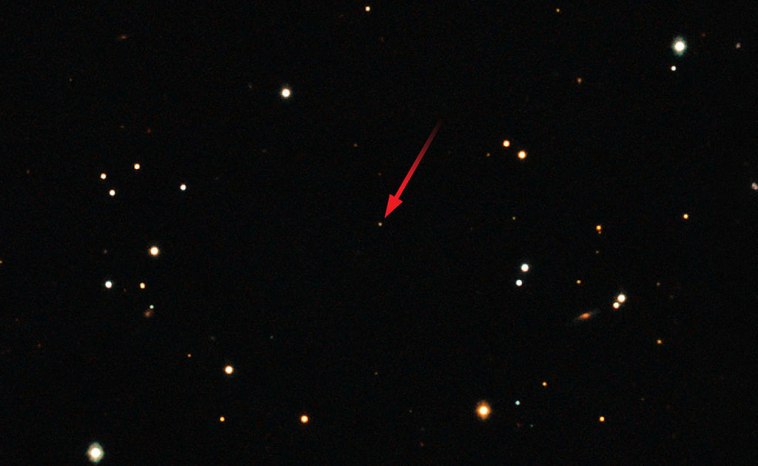What Is a Gamma-Ray Burst?

Ferociously powerful and little understood, they’ve fascinated astronomers for decades. But what is a gamma-ray burst? In this article, we’ll tell you everything you need to know.
Since their first observations in the 1960s, scientists have studied gamma-ray bursts in the hopes of learning more about the phenomenon and the effects they have. But while our knowledge has come a long way in the last 60 years, there’s still plenty that we don’t know about these mysterious and energetic explosions.
What Is a Gamma-Ray Burst?
Gamma-ray bursts (GRB) are the universe’s most powerful and luminous known events. In just seconds, a GRB can unleash more energy than the Sun will throughout its ten-billion-year lifespan. While scientists believe they could occur in any galaxy, we have only detected them in distant galaxies, typically billions of light-years away.
The discovery of GRBs was an accident. The United States suspected that the Soviet Union might have been testing nuclear weapons in space and tasked scientists with detecting gamma rays produced in such testing. In 1967, using Vela satellites, the scientists detected flashes of gamma radiation unlike any seen before.
Since the 90s, new technology has allowed scientists to discover more GRBs, such as the Compton Gamma-Ray Observatory and the Gamma-Ray Burst Coordinates Network. On average, satellites spot one burst each day – though scientists estimate that as many as 500 could occur that we don’t see every day.
What Are the Types of Gamma-Ray Bursts?
GRBs come in three different forms:
Short-Duration Bursts
Short-duration bursts are those that last for less than two seconds and can potentially last for just milliseconds. We know less about the reasons and mechanisms behind short-duration blasts. However, scientists believe they may result from kilonovae, a smaller type of supernova that occurs when neutron stars merge with other neutron stars or black holes.
Short-duration bursts account for about 30% of the GBRs we have detected so far.
Long-Duration Bursts
Most bursts that we observe are long-duration bursts, which are GRBs that last longer than two seconds. These bursts are typically associated with hypernovae, a massive type of supernova. While a star needs to have eight solar masses to go supernova, a hypernova occurs when a star has around 30 solar masses, making for a particularly energetic explosion.
When the core of a sufficiently massive and rapidly rotating star collapses, it will create a black hole. An accretion disk, composed of gas, plasma, and dust, will form around the black hole as material begins to spiral around it. The rotating disk produces a magnetic field. However, as the disk rotates more quickly nearer to the black hole (almost at the speed of light), the varying speed of the disk’s rotation causes its magnetic field to twist and warp. This act produces tremendous energy, resulting in the ejection of jets of material at almost light speed. The collision of high-energy particles in this jet produces gamma rays.
As long-duration bursts last longer and have afterglows that can last for as much as a month, they are typically easier to detect than short-duration bursts.
Ultra-Long Bursts
Ultra-long bursts are essentially the same as long-duration bursts but last longer than 10,000 seconds. Astronomers believe this type of GBR occurs when a blue supergiant, like Rigel, collapses.
How Can Gamma Ray Bursts Affect Earth?
Scientists estimate that a gamma-ray burst would completely vaporise anything it directly hits within 200 light-years of the blast. Luckily for us, there are no candidate stars that could produce a GRB within that distance from Earth. This doesn’t mean we are completely safe from their risks, though.
A GRB occurring in our galaxy could have direct effects on our planet. Scientists estimate that a ten-second burst occurring 6,000 light-years away could be enough to damage a significant amount of our ozone layer. The loss of the ozone layer would leave the Earth exposed to harmful UV radiation from the Sun for several years, which could affect our health and destroy crops and ecosystems. Interestingly, this might have already happened to our planet in the past. 450 million years ago, the Late Ordovician mass extinction, one of five mass extinction events known to have occurred on Earth, killed almost 85% of marine species. Some scientists hypothesise that a GRB occurring within 6,000 light-years of Earth may have caused this event.

What is the Biggest Known Gamma Ray Burst?
The largest-known gamma-ray burst reached Earth on the 9th of October 2022, when radiation from GRB 221009A hit detectors orbiting the Earth. After analysis of the blast, scientists estimate it was so bright it could be a 1-in-10,000-year event, declaring it the ‘BOAT’ – Brightest Of All Time. Satellites captured images of a halo created by the burst as it illuminated dust in space from two billion light-years away.
One Million Stars App
While gamma-ray bursts aren’t a common feature of our galaxy, you can explore some of the objects that call the Milky Way home using the OSR’s One Million Stars App. Visit the app now and take a tour through the stars!


